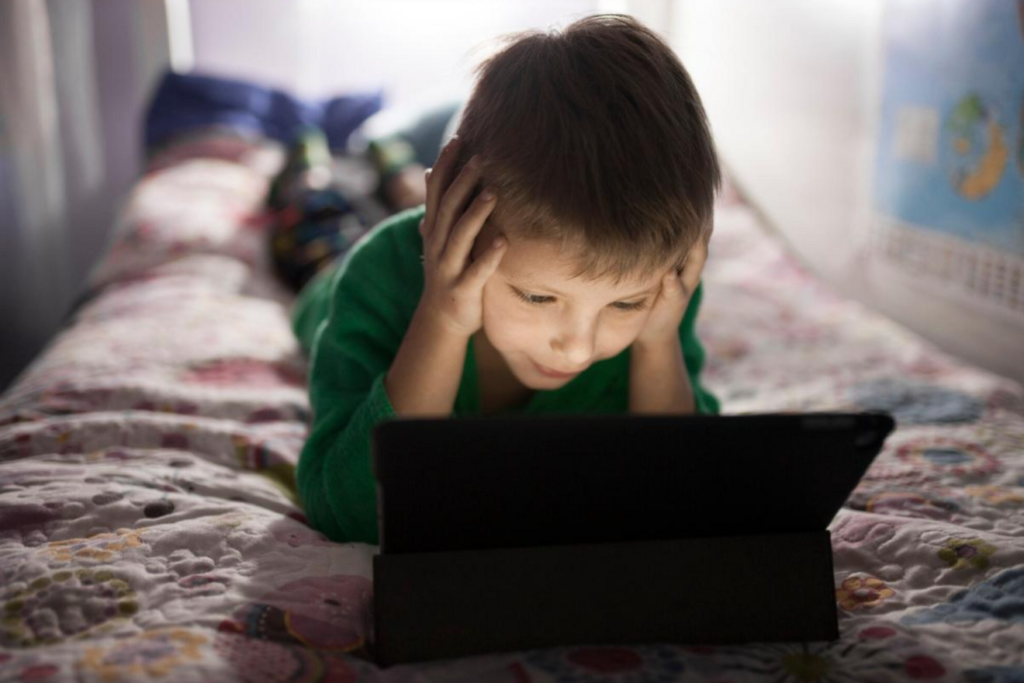
In today’s digital world, screens have become an unavoidable part of life, especially for children. While technology offers benefits, it also presents challenges when it comes to limiting screen time for young children. Many parents worry about the potential negative impact too much screen exposure can have on their child’s development. The good news is, by fostering early engagement with books, art, and hands-on activities, you can create a balanced environment that supports your child’s growth in healthier ways.

Excessive screen time is linked to various developmental issues in children, including reduced attention span, difficulties with social interaction, and sleep disturbances. Studies suggest that too much screen exposure, especially for children under five, can lead to delayed language skills, lower academic performance, and even behavioral problems.
While some screen time is inevitable in today’s world, it’s crucial to establish limits that prioritize more engaging activities like reading, drawing, and playing with physical toys. Setting these boundaries early on can significantly improve your child’s cognitive and social development.

Reading is one of the best activities for young children. It helps develop language skills, fosters imagination, and creates a lifelong love for learning. From an early age, children benefit from the one-on-one interaction that comes from reading with their parents. Not only does it build vocabulary, but it also helps children grasp storytelling, problem-solving, and critical thinking skills.
Similarly, art-based activities like drawing, coloring, and crafting play a vital role in motor skill development and creativity. Using paper, pencils, and paints allows children to express themselves in ways that screens simply cannot provide. These activities engage a child’s brain in ways that build focus, attention to detail, and fine motor skills.

Here are some practical steps to limit screen time and promote more hands-on activities:
Create screen-free zones: Designate certain areas of your home, such as bedrooms or the dining area, as screen-free zones. This helps your child understand that screens aren’t the center of every activity.
Set daily screen limits: Establish clear rules about how much screen time is allowed per day. For younger children, experts recommend no more than one hour of high-quality screen time daily.
Introduce daily reading time: Start a family tradition of reading together each day, either before bed or after school. Choose books that align with your child’s interests, making reading a fun and interactive experience.
Encourage creative arts: Set up an art station with coloring books, sketchpads, and craft supplies.
Encourage your child to explore different forms of art, whether it’s drawing, painting, or making simple crafts.
Tech-free family activities: Incorporate tech-free activities into your routine, such as outdoor play, board games, or cooking together. These activities help your child disconnect from screens and engage with the world around them.

Transitioning from screen time to more interactive, hands-on activities doesn’t have to be difficult. Start by gradually reducing the amount of screen time each day, and replace it with fun, engaging alternatives. Here are a few suggestions:
For every 30 minutes of screen time, follow it up with 30 minutes of reading or drawing.
Plan weekend activities centered around books, like visiting a library or organizing a mini art gallery at home with your child’s creations.
Be an example: Limit your own screen time and actively engage in reading or creative activities with your child.
By replacing screen time with interactive and creative activities, you’ll help your child develop healthier habits that last a lifetime.

Limiting screen time and encouraging engagement with books and art from an early age provides long-term benefits for children. It enhances their focus, nurtures creativity, and allows them to develop a deeper connection with the world around them. Children who engage more with books and hands-on activities are better equipped to navigate academic challenges and social interactions, as they’ve developed stronger cognitive and emotional skills.
Moreover, by fostering these habits early, you help your child develop a love for learning, creativity, and critical thinking—skills that are essential for their future success.
In a world where screens are everywhere, it’s crucial to take a proactive approach to managing your child’s screen time. By creating a balanced environment that encourages books, art, and real-world interaction, you’ll support their overall development in a meaningful way.
Call to Action: Take small steps today by introducing one screen-free activity into your child’s daily routine, whether it’s reading a bedtime story or drawing together. The rewards will last a lifetime.

SatynMag empowers women with inspiring stories, expert advice, and uplifting content to fuel their strength and dreams
Welcome to Satynmag S Suite, online knowledge platform for career and personal growth. This is where you can empower yourself with cutting edge knowledge, latest know-how and grow.


